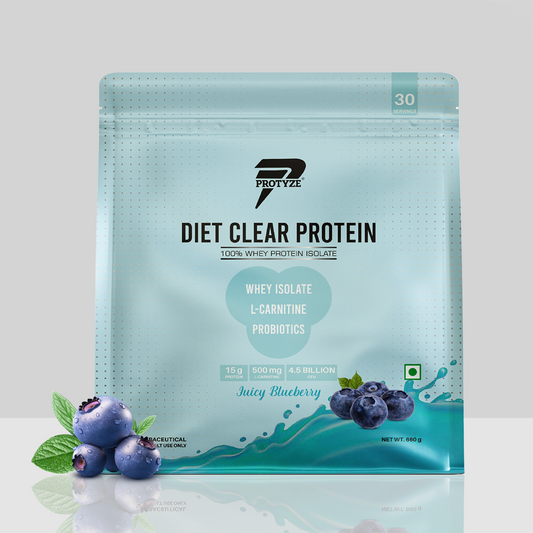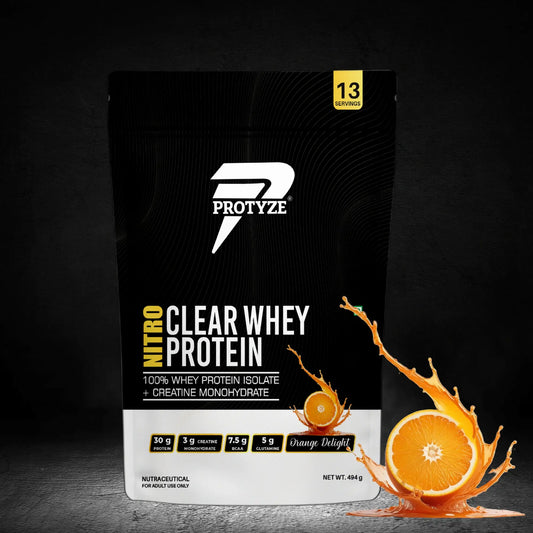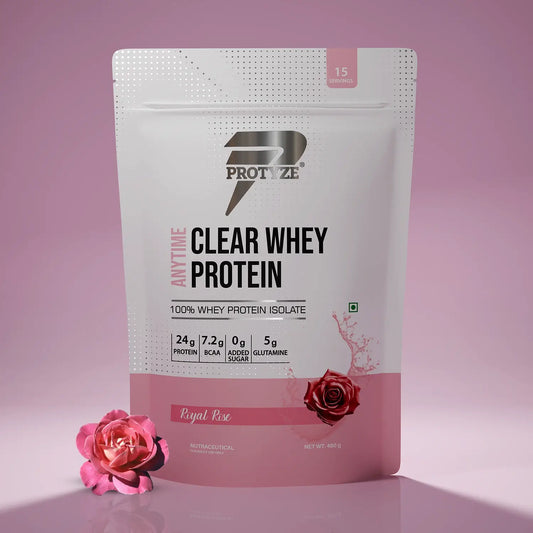When it comes to fitness, everyone talks about protein. But if you’re chasing a lean, toned body — and not just building muscle — protein alone isn’t enough. The real game-changer is the combination of protein + fiber. Together, they form a powerful duo that supports muscle recovery, boosts metabolism, and helps you lose fat the healthy way.
Let’s understand why this combination works so effectively, and how you can make the most of it through your daily meals and smart supplementation.
Understanding Protein: The Foundation of Muscle Growth
Protein is made up of amino acids — the building blocks that repair and grow your muscles. Whether you lift weights, run, or even do yoga, your muscles experience small tears during exercise. Protein helps repair these tears, making your muscles stronger and more defined over time.
How much protein do you need?
For most active individuals:
-
General fitness: 1.2–1.6 grams per kg of body weight
-
Muscle gain: 1.6–2.2 grams per kg of body weight
- Fat loss while preserving muscle: around 2.0 grams per kg
For example, a 70 kg person trying to lose fat but retain muscle should aim for roughly 130–140 grams of protein per day.
Protein’s role in fat loss
Protein is not just about muscle; it plays a major role in fat loss too:
-
Increases metabolism – Digesting protein burns more calories compared to carbs or fats.
-
Reduces hunger – Protein keeps you full longer by controlling the hunger hormone ghrelin.
- Preserves lean mass – During calorie deficit, it prevents muscle loss and ensures that what you lose is mostly fat.
Understanding Fiber: The Forgotten Nutrient for Weight Control
While protein gets the spotlight, fiber is often the quiet hero in your diet. Fiber is a type of carbohydrate that your body can’t digest, but it plays vital roles in digestion, metabolism, and even fat control.
Types of fiber
-
Soluble fiber – Found in oats, apples, chia seeds, and beans. It absorbs water and forms a gel-like substance in the stomach, slowing digestion and increasing fullness.
- Insoluble fiber – Found in vegetables, whole grains, and nuts. It adds bulk to stool and helps with digestion.
Why fiber is crucial for fat loss
-
Keeps you full longer – Reduces the urge to snack or overeat.
-
Supports gut health – Promotes healthy gut bacteria, which help regulate metabolism.
- Balances blood sugar – Slows down sugar absorption, preventing spikes and crashes that lead to cravings.
A high-fiber diet naturally reduces calorie intake, making fat loss smoother and sustainable.
The Power Duo: How Protein + Fiber Work Together
When you combine protein and fiber, the benefits multiply.
1. Longer satiety, fewer cravings
Protein controls hunger hormones, while fiber slows digestion. Together, they keep you full for hours, making it easier to stay in a calorie deficit without feeling deprived.
For example, having a bowl of Greek yogurt (protein) with chia seeds and berries (fiber) can keep you satisfied far longer than a bowl of cereal.
2. Stable energy and improved focus
Fiber helps in slow release of energy, while protein prevents energy crashes. You feel more active, alert, and less likely to crave sugary snacks throughout the day.
3. Better digestion and nutrient absorption
Fiber supports gut health, ensuring your digestive system can efficiently absorb amino acids from protein sources. Without proper digestion, even high protein intake won’t benefit muscle repair effectively.
4. Enhanced muscle tone and reduced fat storage
When your body gets enough protein, it maintains muscle. When it gets enough fiber, it regulates appetite and blood sugar. Together, this results in leaner muscle definition and reduced body fat percentage.
Best Food Sources of Protein + Fiber
To get the most out of this combination, focus on whole foods that deliver both nutrients naturally.
High-protein foods
-
Eggs and egg whites
- Chicken breast
-
Fish (salmon, tuna, cod)
-
Paneer and Greek yogurt
-
Lentils, chickpeas, and beans
- Whey protein isolate
High-fiber foods
-
Oats and quinoa
-
Fruits like apples, guava, and berries
-
Vegetables such as broccoli, spinach, and carrots
-
Seeds like flaxseed, chia, and pumpkin seeds
- Whole grains and brown rice
A great approach is to combine them — for example, eggs with vegetables, or oats with whey protein.
How Protein + Fiber Support Lean Muscle and Fat Loss
Let’s break down what happens inside your body when you fuel it with this combo:
1. During workouts
Protein provides amino acids to repair muscle fibers, while electrolytes (often lost through sweat) are replenished by fiber-rich foods like fruits and vegetables. This ensures better muscle contractions and endurance.
2. After workouts
Your muscles crave nutrients post-training. Protein helps rebuild muscle tissue, and fiber ensures steady digestion and energy release. Having a light, easily digestible protein source after workouts is key for faster recovery.
3. During fat loss
When calories are reduced, hunger increases — but protein and fiber help you feel full, stabilize hormones, and maintain energy levels even on lower calorie intake.
The Role of Functional Protein Supplements
In today’s busy lifestyle, hitting your daily protein goal can be tough — especially when you’re trying to balance meals with enough fiber. This is where functional supplements like clear whey protein can make a huge difference.
Unlike heavy shakes, clear whey protein is light, refreshing, and quick to digest. It doesn’t cause bloating or heaviness, making it ideal even for those who are lactose intolerant.
Example: Protyze Diet Clear Whey Protein
If your goal is fat loss with muscle tone, Protyze Diet Clear Whey Protein Isolate can be a smart addition to your daily routine.
It provides:
- 15g of high-quality protein
-
L-Carnitine for better fat metabolism
- Probiotics for improved gut health and digestion
This makes it a perfect companion to a high-fiber diet — working synergistically to burn fat and preserve lean muscle. Since gut health directly impacts nutrient absorption and metabolism, probiotics play a key supporting role here.
When to Take Protein + Fiber for Best Results
Morning:
Starting your day with protein and fiber helps control hunger throughout the day. Example: a protein smoothie with oats or chia seeds.
Post-workout:
Have a fast-absorbing protein source like Protyze Diet Clear Whey Protein or Protyze Anytime Clear Whey Protein within 30 minutes after your workout. Combine this with fiber-rich foods later in your meal to balance digestion.
Evening meals:
Protein-rich dinners (like paneer or fish with vegetables) keep your metabolism active even during sleep. The fiber aids overnight digestion and keeps blood sugar stable.
Lifestyle Tips to Maximize the Benefits
-
Stay hydrated – Both protein and fiber need water to digest properly.
-
Don’t skip meals – Consistent intake helps your body adapt to fat loss without slowing metabolism.
-
Train regularly – Combine strength training with a balanced diet for best results.
-
Track your macros – Knowing your protein and fiber intake ensures you’re fueling efficiently.
- Avoid processed foods – They often lack fiber and can disturb gut balance.
Conclusion
The combination of protein and fiber is one of the simplest yet most effective nutritional strategies for building lean muscle and losing fat. While protein repairs and strengthens muscles, fiber regulates hunger, digestion, and fat metabolism — creating a perfect balance for a fitter, healthier body.
Adding a clear whey protein like Protyze Diet Clear Whey can further simplify your journey by giving your body the right nutrients it needs — clean, light, and effective. Paired with a high-fiber diet and consistent training, it’s a recipe for sustainable results.
Because when it comes to fitness, it’s not just about what you eat — it’s about how smartly you combine it.





